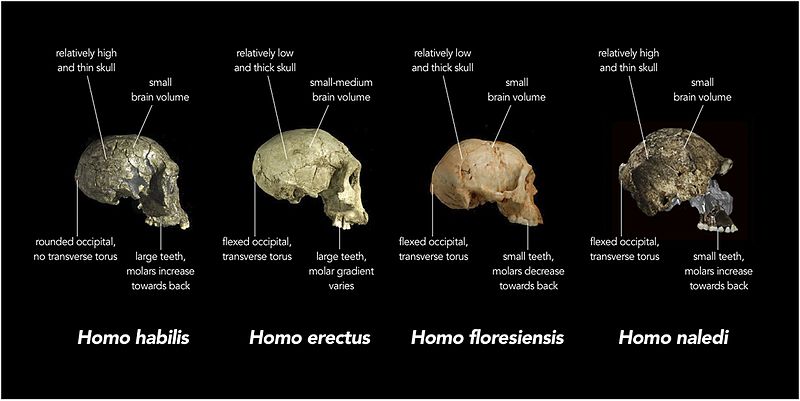Dosya:Comparison of skull features of Homo naledi and other early human species.jpg

Bu önizlemenin boyutu: 800 × 401 piksel. Diğer çözünürlükler: 320 × 160 piksel | 640 × 321 piksel | 1.024 × 513 piksel | 1.280 × 641 piksel | 2.560 × 1.283 piksel | 4.473 × 2.241 piksel.
Tam çözünürlük ((4.473 × 2.241 piksel, dosya boyutu: 382 KB, MIME tipi: image/jpeg))
Dosya geçmişi
Dosyanın herhangi bir zamandaki hâli için ilgili tarih/saat kısmına tıklayın.
| Tarih/Saat | Küçük resim | Boyutlar | Kullanıcı | Yorum | |
|---|---|---|---|---|---|
| güncel | 00.58, 12 Eylül 2015 |  | 4.473 × 2.241 (382 KB) | Animalparty | User created page with UploadWizard |
Dosya kullanımı
Bu görüntü dosyasına bağlantısı olan sayfalar:
Küresel dosya kullanımı
Aşağıdaki diğer vikiler bu dosyayı kullanır:
- arz.wikipedia.org üzerinde kullanımı
- ast.wikipedia.org üzerinde kullanımı
- az.wikipedia.org üzerinde kullanımı
- bg.wikipedia.org üzerinde kullanımı
- ca.wikipedia.org üzerinde kullanımı
- ceb.wikipedia.org üzerinde kullanımı
- de.wikipedia.org üzerinde kullanımı
- en.wikipedia.org üzerinde kullanımı
- es.wikipedia.org üzerinde kullanımı
- eu.wikipedia.org üzerinde kullanımı
- fr.wikipedia.org üzerinde kullanımı
- ga.wikipedia.org üzerinde kullanımı
- he.wikipedia.org üzerinde kullanımı
- hr.wikipedia.org üzerinde kullanımı
- ia.wikipedia.org üzerinde kullanımı
- id.wikipedia.org üzerinde kullanımı
- ja.wikipedia.org üzerinde kullanımı
- kab.wikipedia.org üzerinde kullanımı
- ka.wikipedia.org üzerinde kullanımı
- kn.wikipedia.org üzerinde kullanımı
- nl.wikipedia.org üzerinde kullanımı
- nn.wikipedia.org üzerinde kullanımı
- no.wikipedia.org üzerinde kullanımı
- oc.wikipedia.org üzerinde kullanımı
- pl.wikibooks.org üzerinde kullanımı
- pt.wikipedia.org üzerinde kullanımı
- ro.wikipedia.org üzerinde kullanımı
- simple.wikipedia.org üzerinde kullanımı
- species.wikimedia.org üzerinde kullanımı
- sv.wikipedia.org üzerinde kullanımı
- uk.wikipedia.org üzerinde kullanımı
- ur.wikipedia.org üzerinde kullanımı
- vi.wikipedia.org üzerinde kullanımı
- vls.wikipedia.org üzerinde kullanımı
- www.wikidata.org üzerinde kullanımı
